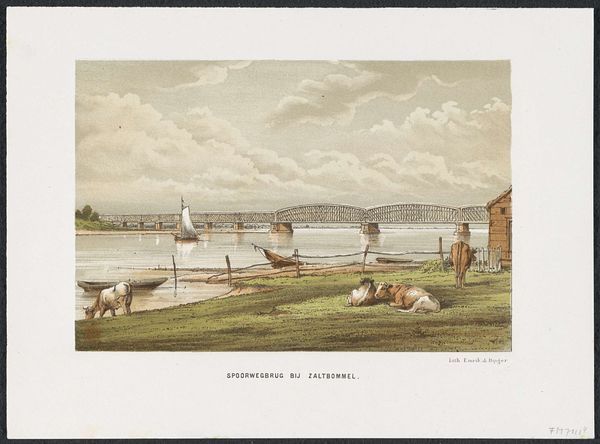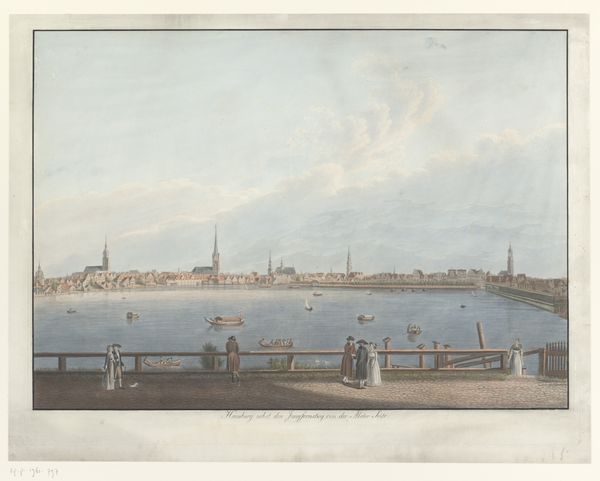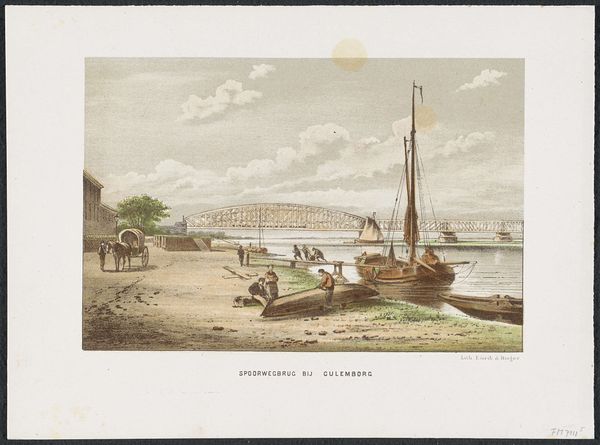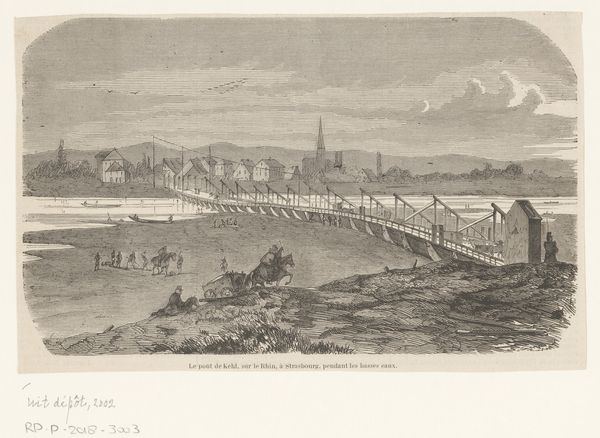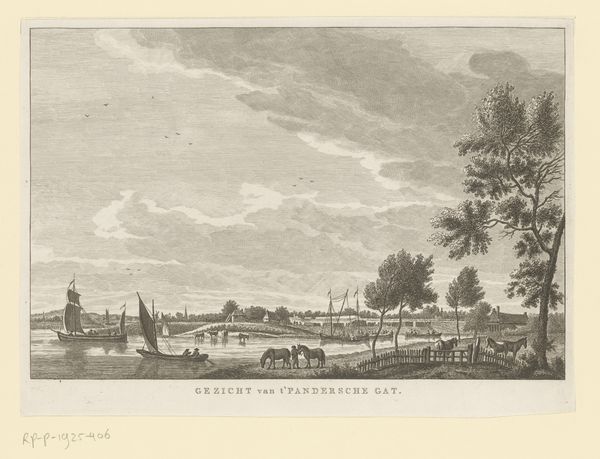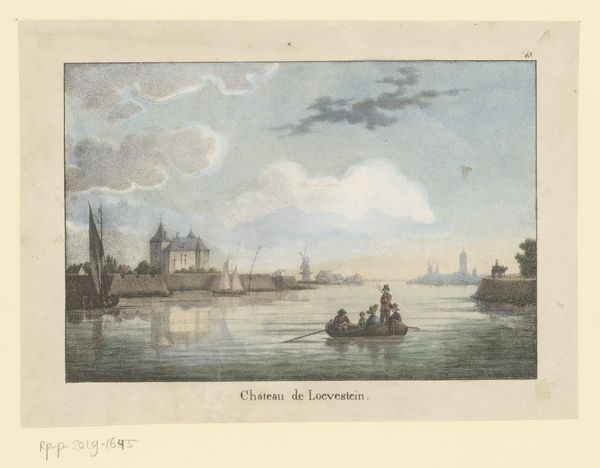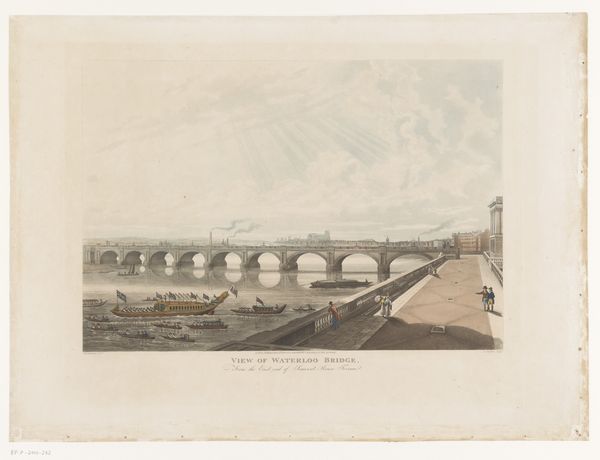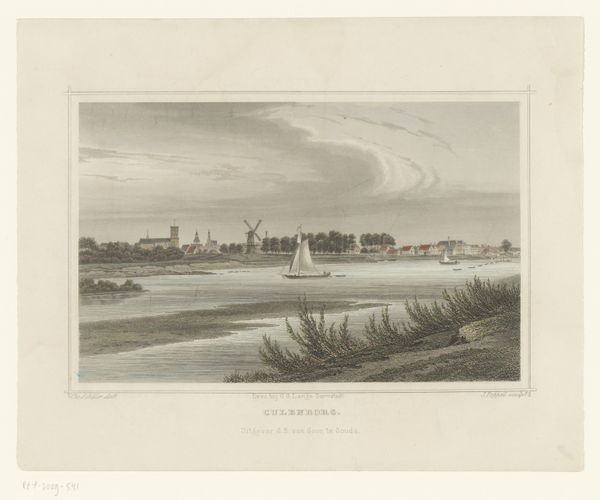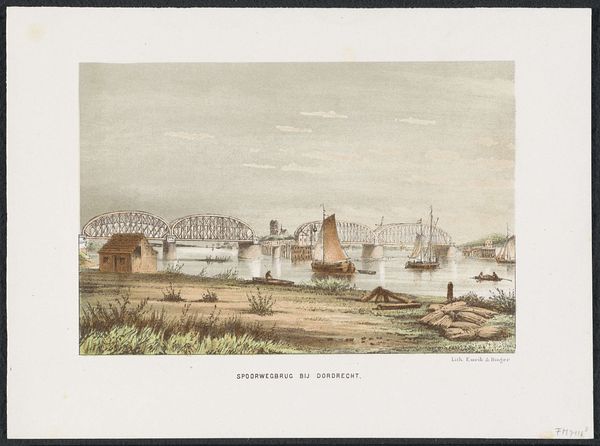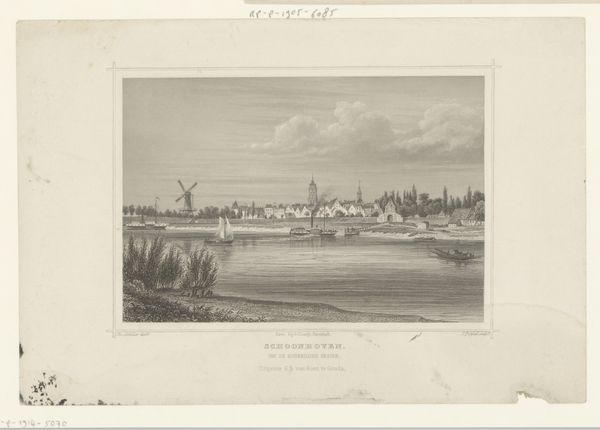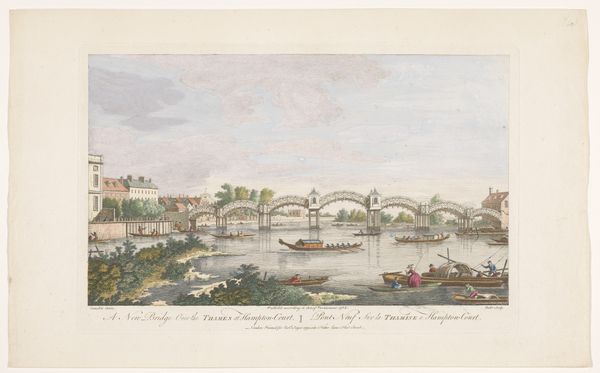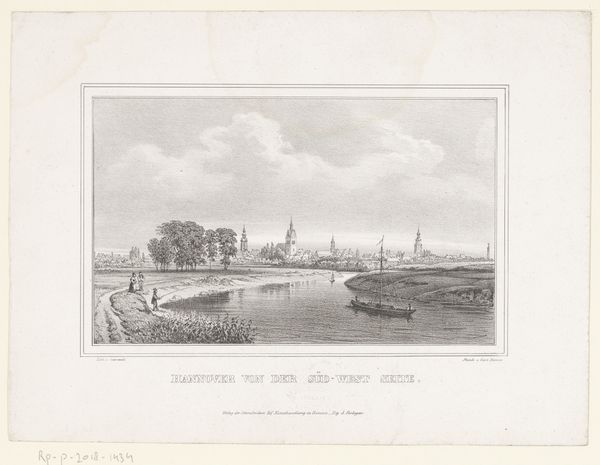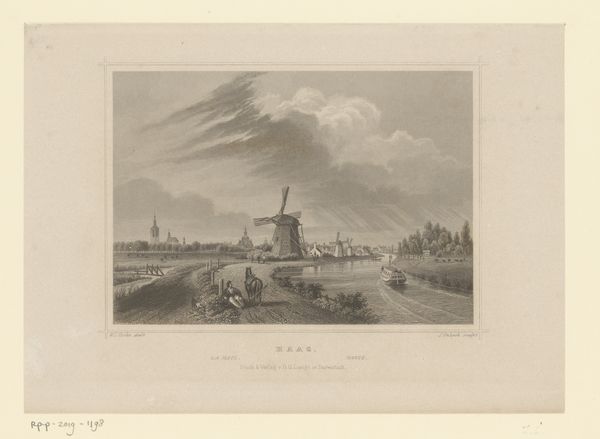
Dimensions: height 215 mm, width 292 mm
Copyright: Rijks Museum: Open Domain
Editor: Here we have "Moerdijkbrug," made between 1872 and 1874. It's an aquatint print currently held in the Rijksmuseum collection. I find the bridge really dominates the scene, even though there are these cute sailboats and buildings. What do you make of it? Curator: It's crucial to consider the material conditions that birthed this image. The aquatint technique itself is interesting; the use of acid to create tonal variations, simulating a watercolor effect, suggests an ambition to elevate printmaking. The artist's manipulation of copperplate production allows this piece to be serially reproduced, widening consumption. Think of it within its contemporary media landscape; do you see the bridge and setting in relation to other images of technology, of labour, or progress? Editor: I suppose, it's a celebration of engineering perhaps? But there's a sense of nostalgia, too, with the sailboats and muted colours. How does that play in? Curator: Exactly, it's a very conscious play. The very image itself documents both progress and the existing context which progress emerges from. I imagine the materiality of its context would determine its perception by contemporary viewers and consumers of the day, who both rely on that bridge to some degree as well as have potential economic investments. How can we examine who commissioned such an image to both sell and perpetuate? Editor: That’s fascinating. Thinking about the bridge not just as an object, but as something made, consumed, and deeply connected to the economy around it gives me a totally different perspective. I learned to consider the art production and also how it fits within the big social context. Curator: Precisely! It prompts us to reconsider these materials and tools and the bridge in their historical settings. I look at prints not only as aesthetic objects, but also a reflection of a historical environment.
Comments
No comments
Be the first to comment and join the conversation on the ultimate creative platform.
